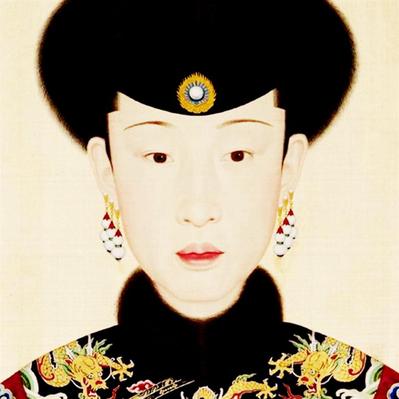
Empress Xiaoyichun
| Name | Empress Xiaoyichun |
| Title | Qing Dynasty empress |
| Gender | Female |
| Birthday | 1727-10-23 |
| nationality | Qing dynasty |
| Source | https://www.wikidata.org/wiki/Q461124 |
| pptrace | View Family Tree |
| LastUpdate | 2025-10-27T03:40:29.278Z |
Introduction
Empress Xiaoyichun (23 October 1727 – 28 February 1775), born into the Manchu Bordered Yellow Banner Weigiya clan, was an imperial consort of the Qing dynasty. Her personal name has not been recorded in historical sources. She was of Han Chinese origin and held the status of a Booi Aha, a bondservant class within the Bordered Yellow Banner. Her father was Wei Qingtai, who served as a fifth rank literary official in the Imperial Household Department and was awarded the title of duke of the third rank. Her paternal grandfather was Wei Jiuling, and her mother was Lady Yanggiya. She had an elder sister.
Her birth date corresponds to the 9th day of the 9th lunar month of the 5th year of the Yongzheng Emperor's reign, which is 23 October 1727 in the Gregorian calendar. The exact date of her entry into the Forbidden City is not documented. According to the Draft History of Qing, she was described as "from the Weigiya family, daughter of Qingtai, a bondservant manager in the Imperial Household Department." The family name "Weigiya" is a Manchu adaptation of the Han Chinese surname "Wei," which was elevated into the Manchu Banner system and granted the character "giya," transforming their status within the Manchu banners. Her family belonged to the bondservant class and was not part of the Eight Banners, which limited her entry into the imperial harem to selection as a palace maid or female official rather than as an imperial consort directly.
In 1745, she was granted the rank of noble lady and was later elevated to concubine on 9 December 1745, receiving the title "Ling" (令). On 20 May 1749, she was promoted to consort, a higher rank amongst imperial consorts. Although she initially did not have children with the Qianlong Emperor, he was noted to have favored her and described her as "gentle and beautiful." She bore the emperor her seventh daughter, Princess Hejing, on 10 August 1756; her fourteenth son, Yonglu, on 31 August 1757 (who died prematurely on 3 May 1760); and her ninth daughter, Princess Heke, on 17 August 1758. She was promoted to noble consort on 3 February 1760 and gave birth to the emperor's fifteenth son, Yongyan, on 13 November 1760.
Further childbirths included the Qianlong Emperor's sixteenth son, who died young, on 13 January 1763. During this period, following the political change involving Empress Nara and her subsequent downfall, she was promoted to imperial noble consort on 28 July 1765, effectively acting as the de facto empress after the removal of Empress Nara. Her duties included conducting rites at the ancestral altar, overseeing palace personnel, supervising imperial princes' education, and planning imperial marriages. She participated regularly in imperial excursions and official duties.
In 1773, Qianlong secretly selected Yongyan as the crown prince. As her health declined, she became increasingly ill, especially after the death of her elder daughter on 9 February 1775. She died shortly thereafter at the age of 47 on 28 February 1775. She was posthumously honored as "Imperial Noble Consort Lingyi" on 12 March 1775, and her funeral was elaborate, with her interment in the Yu Mausoleum of the Eastern Qing tombs on 19 November of that year.
In 1796, her posthumous title was raised to "Empress Xiaoyi" after the death of Qianlong, and upon the accession of her son, Emperor Jiaqing, she was further honored with the title "Empress Xiaoyichun" in 1799. Her remains were found to be well-preserved during a grave robbery investigation in 1928. The various titles she held included Lady Wei, Noble Lady, Concubine Ling, Consort Ling, Noble Consort Ling, Imperial Noble Consort Lingyi, and Empress Xiaoyi. Her children included Princesses Hejing and Heke, and sons Yonglu, Yongyan (later Emperor Jiaqing), and Yonglin.
Throughout her life, she was portrayed in various popular culture productions, including multiple television series and films.
Family Tree
Tap to expand more relatives